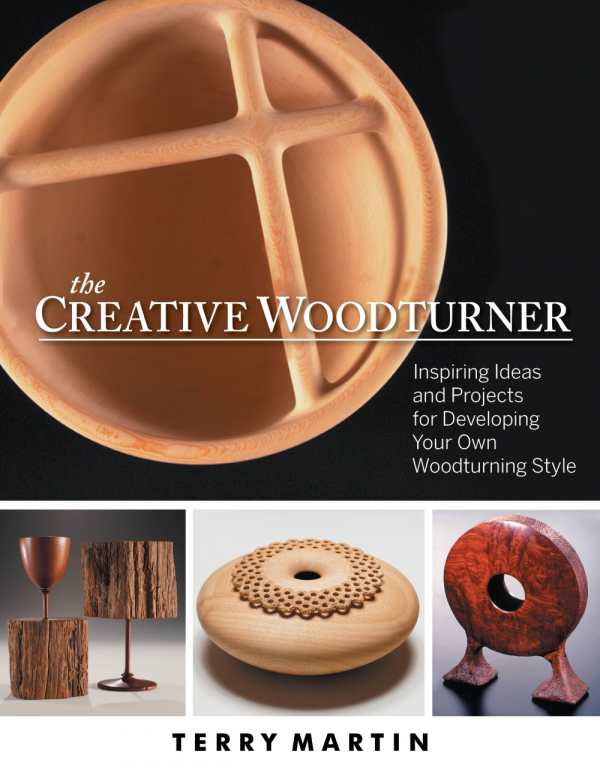The Creative Woodturner
Inspiring Ideas and Projects for Developing Your Own Woodturning Style
Years of creative exploration and experimentation elevate this how-to guide to an artistic status.
In his latest publication, The Creative Woodturner: Inspiring Ideas and Projects for Developing Your Own Woodturning Style, Terry Martin offers accomplished woodturners new ways of thinking about working with wood and creating their own artistic styles. Through examination of some of his “idea tools” for capturing creativity and separate chapters detailing sixteen of his own designs, Martin offers the experienced craftsperson insight into how and why he made his artistic decisions, improvised new techniques and jigs, and arrived at his final piece.
Beginning woodturners and other artists will enjoy poring over the pages of this beautifully designed and photographed book, but the book is principally targeted to those craftspersons who are already proficient with woodturning tools and techniques and want to take their craft to the next level by planning their own designs. The author offers much advice and anecdotal asides on how to make this transition and is convinced that “you can train yourself to become creative.”
Martin shot all of the photographs in this volume, and the images are not only sharp and instructive but are also interesting compositions themselves. The high-speed action of various woodturning techniques is captured in crisp detail, with bits of wood shavings spiraling out attractively, while the still photographs show off Martin’s expertise with lighting and shadows.
A native Australian, Martin works with many kinds of wood that will be unfamiliar to American readers, including Huon Pine, Queensland Rosewood, Yakka, and Jacaranda. He has also experimented with aboriginal-inspired designs, worked in collaboration with other wood artists, and pushed design boundaries with many nontraditional forms for goblets and bowls. His Cyclops series of footed bowls has become one of his signature styles, and he notes that the inspiration for these designs sprang from moping over a broken bowl piece but then intensely focusing on ways to reshape his original project.
Martin’s book gives readers the chance to see his artistry in action in the numerous project examples. One can forgive him a few hokey titles for his pieces (Impossibowl, Crate Expectations, Munchtime) because he is so generous in sharing much of his hard-won knowledge and inspiration.
Reviewed by
Rachel Jagareski
Disclosure: This article is not an endorsement, but a review. The publisher of this book provided free copies of the book to have their book reviewed by a professional reviewer. No fee was paid by the publisher for this review. Foreword Reviews only recommends books that we love. Foreword Magazine, Inc. is disclosing this in accordance with the Federal Trade Commission’s 16 CFR, Part 255.

